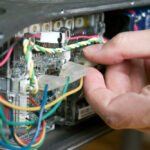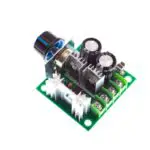The pandemic has been one of the worst experiences that humanity has gone through. However, it is also human to find a silver lining in every cloud.
While public transport had to be shunned for obvious reasons, people finally decided to give cycling a try. And what got their motor going (pun intended) was the new kid on the block – the E-bike.
E-bike sales grew by 84% in March, 92% in April, 137% in May, and 190% in June’20, as per figures reported by the NPD group[1].
E-bikes are becoming so popular because they overcome the drawbacks of regular bikes. By adding on a motor and a battery, they make riding easy.
Personal bikes are more comfortable to ride through traffic than a car or a motorbike, to top that off. They avoid pollution and are noise-free to boot.
But this boom in e-bike sales has also meant that there are many confused e-bike owners out there. If you have recently purchased an e-bike, we are sure that you too would have loads of questions. We are here to answer one of the most important ones:
How To Test An E-Bike Battery?
“How can I test An E-Bike Battery To See If I Got What I paid For?” may be one of the most common questions every bike owner has.
Fossil fuel-free transportation has gained a lot of popularity, and the reason behind this is the continuously decreasing cost of the Lithium-Ion battery and other batteries.
While this is great for e-bike prices, you may not always feel satisfied with the performance of your e-bike. This happens because you may have got a low battery.
At such times, you may want to check and test it manually to see if it’s working correctly or not. If you see the battery getting discharged overnight, even when you fully charged it, it’s time to open up that box!
Step 1
You may want to keep it on charging for about 20 to 24 hours and then test the voltage using a voltmeter.
Step 2
If it holds that voltage for a few minutes, then your battery may have gotten balanced. You can take a short ride around the street and observe your speed and keep track of the distance covered. You should be able to ride at least 10 to 15 miles swiftly.
The usual reason why your battery might be discharging is if the bike is left unused for months. If you leave the battery connected, the cells will degrade, which will impact the performance of your e-bike adversely.
How To Test An E-Bike Battery With A Multimeter?
Multimeters are versatile tools that can measure the volts of home appliances and vehicle batteries as well. It is a handy device you can rely on if you ever feel stuck or confused with your e-bike’s battery.
Also, they are readily available and can thus be purchased from any auto parts stores. For higher precision and accurate results, it is advised to use Digital Multimeters.
Here is a step by step guide on how you can test an e-bike battery with a multimeter:
Step 1
Please think of the last time you rode your bike, and think of the last time you charged it’s battery. If it has been over 30 days, quickly put it on charge for 6 to 8 hours.
Step 2
Position the bike against a rigid surface to make it steady. Place the front wheel against the wall; this way, the bike will remain intact in its position.
Step 3
You may use a digital or a regular multimeter for measuring the voltage. For that, set the multimeter function to DC Volts or VDC.
Step 4
Look for the DMM probes every multimeter has.
Step 5
Power off the bike. Bring the DMM probes in contact with both the terminals of the battery. Now read the voltage.
Step 6
Always take 2 to 3 readings. For this, ask someone to sit on the bike. Ensure that the wheel doesn’t spin while the power is switched on.
The voltage you took while you turned the bike off indicates the bike’s voltage rating. The voltage you took in the second reading indicates the battery’s voltage.
Now, the battery’s voltage should always be higher than the bike’s voltage rating by a few volts. If it is not, this is a sign of caution that you should immediately replace them.
How To Fix A Dead Battery Of An E-Bike?
If you find your battery not being able to hold any charge despite continuous charging, then you should probably test the BMS and check it needs replacement.
BMS is short for Battery Management System. It is responsible for maintaining and regulating the charging and discharging of the battery. It generally fails due to overloaded components or a broken connector.
If you observe some failures, including the charger getting broken, some dead cells, or some wiring disruptions, you should ideally go for a replacement.
You can check the battery’s internals by testing all its wirings and connections, BMS reset, and testing voltages across the pins.
When replacing the BMS, ensure to get the proper one that matches the number of pins and style of the connector. The actual replacement is pretty simple as it only requires a plug and plays replacement.
E-Bike Battery Care Guide
Lithium-Ion batteries have come to the rescue for all power-hungry devices. Other batteries such as Lead or Metal Hydride batteries are also being upgraded accordingly.
They are designed to be very light in weight, compact in size, and have a small form factor. These modern-day batteries have a long cycle life and high energy density.
Batteries are the most crucial part of any electronic device, and when it comes to e-bikes, one has to be very careful in the matters of batteries.
Keep the following points in your mind regarding an e-bike battery:
- For the battery life’s longevity, keep it charged only up to 80 % and not full.
- Batteries, when exposed to high temperatures for prolonged periods, might give rise to parasitic reactions. Thus do not leave your bike standing out in the scorching sun as it may cause capacity loss of its battery.
- Similarly, do not charge the battery is too cold conditions. Ensure you have a heated garage, and if not, then take out the battery and keep it inside at a controlled temperature. Please charge the battery only when it has attained room temperature.
- Leaving the battery at full charge reduces its life considerably and causes degradation. However, if you will use it just after the charging is done, you may change it to 100 %. In other cases, charge it only up to 80 to 90 %.
- You can quickly know when to stop while charging the battery as almost most of the batteries have LED indicators to indicate the stages.
- While charging the battery, keep the charge rate less than 0.5 C. Slow charging always yields better results in the long term versus ultra fast or turbocharging.
- Do not let the charging level fall below 20 %. Ride the bike within a charging range of 20 to 80 %.
- Rethink your riding patterns and routes. Do not let the battery drain off too soon, and if it does, then your riding pattern needs to be changed as it is causing severe wear and tear to the battery.
- Always store the battery of your e-bike in a cool and less humid environment. Avoid storing it at a full charge as it may cause fast degradation. You can’t control the calendar aging, but you surely can control the capacity fade.
- Please use neoprene sleeves for your battery to protect it from the cold chills and dirt, mud, and rain during winters.
- Lastly, use a good quality charger to charge the battery of an e-bike. Usually, e-bikes come with a 2 A charger, which is good enough and can be used regularly.
Conclusion
If you recently bought a bike, you might want to check if the battery is all that the sales guy made it out to be. Sometimes you might face situations where you will want to test the battery of your e-bike before going for a replacement.
There are various ways you can easily do it, including making use of a voltmeter or multimeter. Also, various simple hacks tend to increase battery life’s longevity, which is discussed above.
Despite everything, the battery will expire at some point. Just make sure you ride your bike as much as possible.
References:
[1] Plot Twist: US Performance Bike Sales Rise in June, Reports The NPD Group





